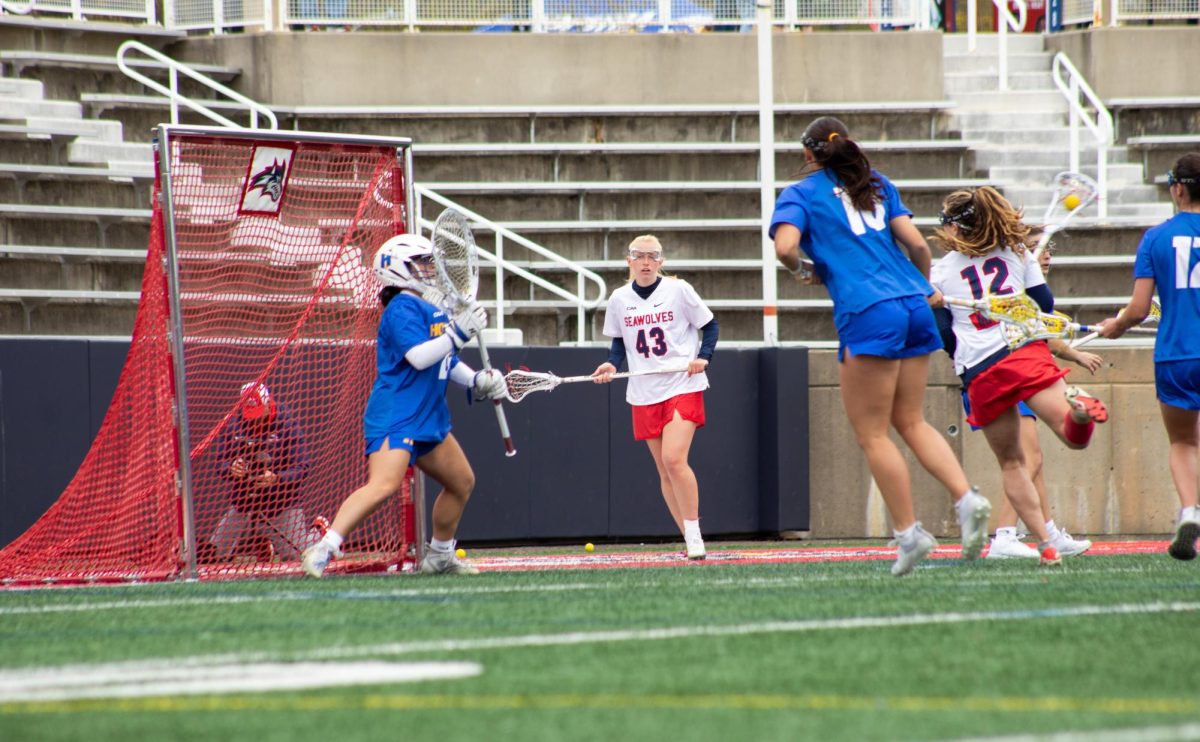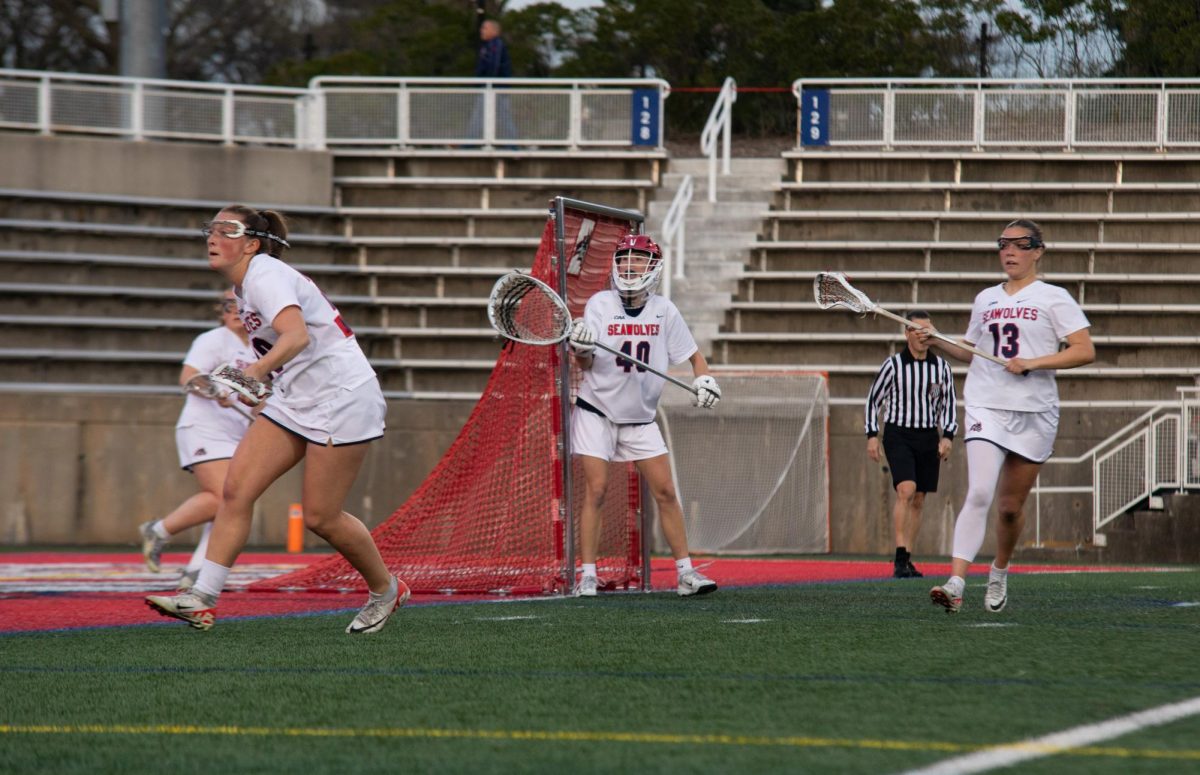
Stony Brook University is one of only two public colleges in the Association of American Universities (AAU), an organization of the top research universities in the United States, that sponsors football at the Division I Football Championship Subdivision (FCS) level, widely regarded as inferior to the top-tier Football Bowl Subdivision (FBS).
The message is simple: state universities whose academics are as renowned as Stony Brook University traditionally also play football at the highest tier. So why don’t we?
The “small school” label associated with FCS universities is misleading and damaging to Stony Brook’s reputation. With 27,000 current students and over 200,000 total alumni, including names such as Joy Behar, Joe Nathan and Jef Raskin, the developer of the Mac, the university is by no means “small”.
A decade ago, Stony Brook football played in the Big South Conference alongside current FBS teams Coastal Carolina and Liberty. During its time in the Big South, Stony Brook earned bragging rights on the field and went a combined 7-3 against the Chanticleers and the Flames.
In the present day, however, it is them who are laughing. Coastal Carolina and Liberty were both regularly ranked during the 2020 season in the AP Top 25 at the FBS level, with the former reaching as high as No. 9. The two schools faced off in the Cure Bowl, which was broadcast on ESPN to 2.6 million viewers, the most-watched bowl game among teams in the Group of Five, the non-power FBS conferences, since 2017.
Meanwhile, Stony Brook, who regularly beat both schools from 2008 to 2012, was left languishing in the FCS despite being more successful than them a decade ago and boasting vastly superior academics.
The Chanticleers joined the Sun Belt from the Big South beginning in 2016, needing to expand their football stadium’s capacity from 9,124 in order to reach the FBS minimum of 15,000. By 2017, Brooks Stadium seated 15,500 with the $38 million expansion fully completed in 2019, seating 20,000.
Meanwhile, Liberty was able to get a waiver that allowed it to advance to the FBS as an independent without being a member of a conference. Since a 2010 expansion, Williams Stadium has been above the FBS capacity standard.
Stony Brook was dealt a devastating blow in 2015 when disgraced former New York governor Andrew Cuomo vetoed $22.2 million allocated for the expansion of Kenneth P. LaValle Stadium, which currently has a capacity of 12,300. Stony Brook had partnered with Populous, the architectural firm which designed Citi Field, Gillette Stadium and Prudential Center, among other stadiums, for the potential project.
It is difficult to understate the long-lasting damage that Cuomo’s veto did to Stony Brook University.
Having FBS-level facilities would have made the Seawolves a more attractive commodity in this wave of conference realignment and reinforce the legitimacy of Stony Brook’s investment into ascension. Instead, to this day, LaValle Stadium remains below FBS standards and contrasting it with what Stony Brook should have had is a painful reminder of Cuomo’s negative legacy.
In 2019, Stony Brook’s athletic budget stood at $36.5 million, the fourth-largest among FCS schools and more than nearly two dozen FBS schools. Only James Madison, Delaware and UC Davis trump Stony Brook in both expenses and revenue. Attendance at football games, which has been trending downward since 2017 and is far below FBS expectations, would undoubtedly rise with the added prestige of playing FBS opponents.
In non-football sports, Stony Brook’s place in the America East Conference is also a hamper in the school’s reputation.
The America East has consistently ranked in the mid-to-low 20s out of 32 Division I conferences in men’s basketball per RPI, and prior to the 2020-21 season, saw half of its ten members suffer the ignominious feat of having never qualified for a single NCAA Tournament. Stony Brook is by far the largest school in the conference by enrollment and was listed as the “best job” in the America East after polling various coaches.
Stony Brook’s AAU academic status and location in the most populous metropolitan area in the United States makes it demoralizing to be in the same conference as “never-been” schools with unheralded academics in the middle of frozen nowhere.
Conference membership is as much rooted in academic prestige as it is athletic accomplishment. It does not reflect well on Stony Brook University to be considered peers with schools such as UMass Lowell, Albany and formerly Hartford for so long when the university’s academic goals are more aligned with schools in FBS conferences.
With that said, the currently lagging football performance and inability to expand LaValle Stadium serve as roadblocks that Stony Brook needs to overcome as the school is evaluated for worthiness in higher places.
Conferences like the CAA and America East are stepping stones for schools like Stony Brook to build off and outgrow. The Seawolves have spent almost a decade in the former and two decades in the latter. For a university that preaches growth and expansion, Stony Brook cannot afford to lose out on this wave of realignment without negative consequences for its image.


















Bill • Nov 4, 2021 at 10:16 am
How about SBU actually wins something in the CAA or the AE before complaining about why it hasn’t moved up to FBS or a bigger basketball conference. One trip to the dance in 20 years is not a resume for moving up in basketball. A handful of FCS playoff appearances with no wins in the second round does not make an FBS program.
Mark Tarantino • Nov 1, 2021 at 12:54 pm
My Stony Brook roommate, Robert Oivari forwarded me the link to the Statesman article regarding Stony Brook football. Bob and I attended the home game against the Fighting Blue Hens of Delaware. Even though it was sports teams day, and fraternity/sorority day, to paraphrase a New York City newspaper of the early 1960s New York Titans, “most of the fans came disguised as empty seats.” Bob and I and several other friends enjoy attending the games. The level of skill and play is very enjoyable. I don’t believe the student body and alumni would enjoy watching the thumping the Seawolves got from University of Oregon on a regular basis. We have all of the trappings of a big time program. Cheerleaders, twirlers and a world class marching band! Several years ago the Univerisities of Maryland and Rutgers decided to step up into the Big Ten and their programs are suffering. If students and alumni were clamoring for tickets I could see investigating moving up in class, but as for now, leave well enough alone.
Mark Tarantino
Class of 1969
516.9091188